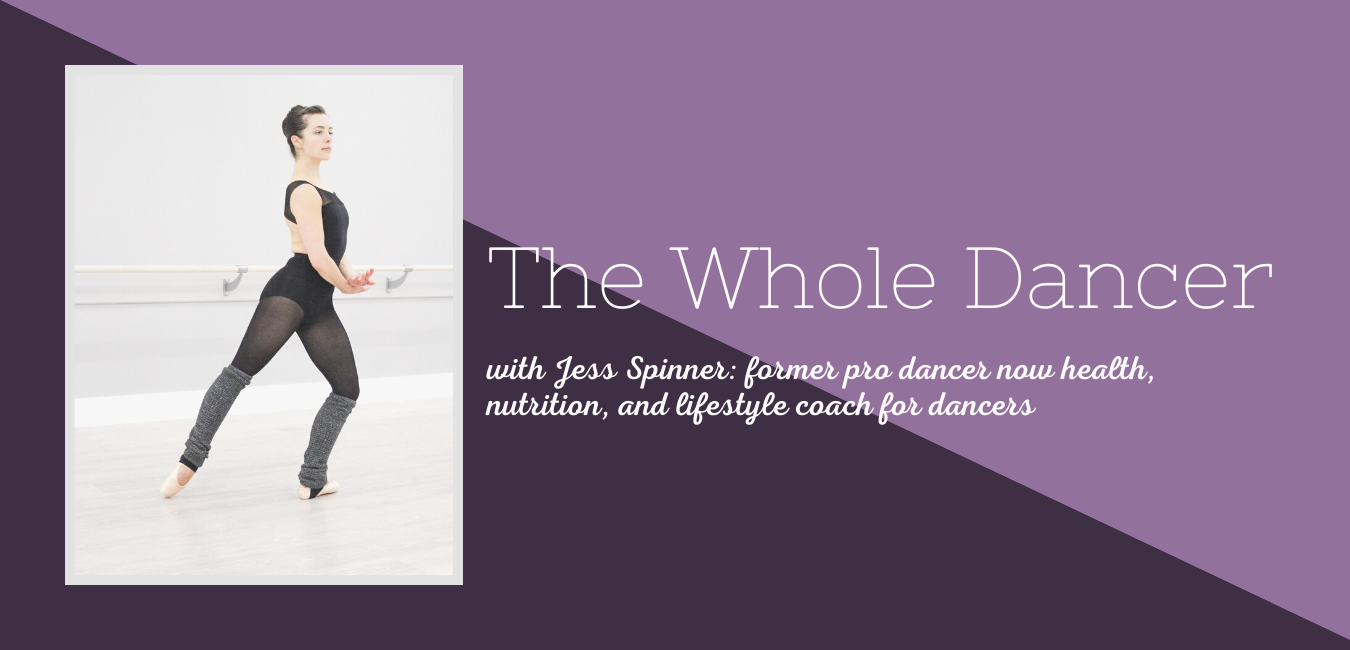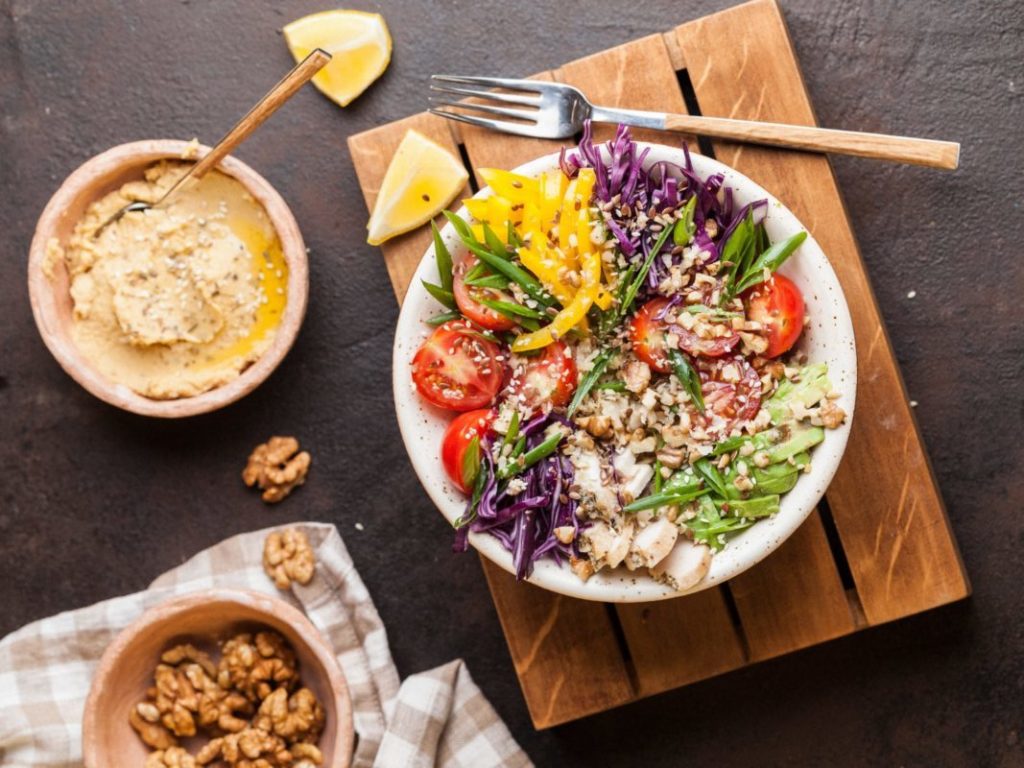The importance of nutrition for dancers is undeniable and will always hold great importance. You’re using your body at the level of an elite athlete. The fuel you choose is going to determine how well your instrument performs.
Eating enough food is crucial.
First and foremost: you can’t put your attention on the importance of nutrition for dancers until you have an easygoing relationship with food.
Adding more health-promoting, nutrient-dense foods to your meal plan won’t be productive unless you’re in a good place to do it. If you’re being restrictive or you struggle to allow indulgences, it’s not time to focus on nutrition.
For you, the first step would be to stop labeling food as “good” or “bad” and to loosen any rules you’ve created around food. Before you can focus on performance-enhancing nutrition for dancers, you need to start making choices that truly honor and serve your body.
Once you’ve achieved a balanced mindset with food, it’s time to cover your nutritional bases and pay special attention to some nutrients a bit more than others.
As a highly active individual, you’ll need more calories than the average person. When you increase your calories and incorporate a varied meal plan, you should be able to easily cover your nutritional needs. Paying close attention to water and iron intake may prove beneficial.
Women, in general, struggle to get adequate iron. As an athlete, you don’t require increased iron, but adequate levels are essential. Iron is used by your body to make hemoglobin and myoglobin, proteins that carry oxygen to the body and muscles. It’s also needed for growth and development and the production of some hormones.
“Symptoms of iron deficiency, anemia, include GI upset, weakness, tiredness, lack of energy, and problems with concentration and memory.”1
Food sources rich in iron include beans, lentils, tofu, potatoes, cashews, dark leafy greens, nuts, seeds, eggs, chicken, liver, and seafood. When you eat vitamin C rich foods in the same meal, iron absorption will be increased.
Maintaining hydration while dancing is connected to improved physical performance. There are a variety of recommendations around how many ounces to actually consume. A great way to know if you’re hydrating adequately is to check the toilet! If your pee is nearly clear, you’re doing great. If not, increase that water intake.
Nutrient timing may be beneficial but doesn’t have to be overcomplicated.
Consuming high quality protein before and after dancing may benefit your overall body composition, performance, and tone. You don’t have to go crazy with this consideration. Simply include some high protein foods you enjoy around when you’re most active. The research overwhelmingly shows that it’s overall macronutrient intake throughout the day that’s most important.
Eating enough remains the main consideration for most dancers.
Dancers and most female athletes for that matter tend to under-fuel. A potential consequence to be aware of is the female athlete triad. “Low energy (with or without an eating disorder) in combination with a menstrual disorder and altered mineral bone density is known as the female athlete triad.”2
If you struggle with any or all of the factors that distinguish the female athlete triad, make an appointment to get screened by your doctor. Early detection is essential to preserve bone mineral density.
Beyond your food, it’s important to consider “primary food” in order to nourish The Whole Dancer.
In integrative nutrition health coaching, the food you actually eat is your “secondary” food and your “primary” food consists of career, physical activity, spirituality, and relationships. Dancers often put tons of focus on food, nutrition, and dance. The other primary foods often take a back seat.
To be a more complete person and to show up more fully as a dancer, place some attention on your primary food. You might create new daily practices that connect you to spirituality. Reach out to friends and reconnect with family members who you haven’t spoken to in a while. Incorporate gentle movement for the sake of self-nourishment instead of physical punishment. And finally, if dance is your career, make sure you’re in an environment that’s supportive and positive.
If you’re struggling to make adjustments to your food choices and nutrient intake, seek support.
It’s not always easy to see what might be lacking in your eating plan. Food is so habitual: we get into a rut and struggle to bring new variety into eating choices. When you talk to someone well versed in nutrition, they’ll easily recognize if you’re not eating enough or possibly favoring one macro over another.
A lot of behavior change often has to happen to shift the way you approach food. A Holistic Health and Lifestyle Coach can encourage you to incorporate some new, beneficial foods into your meal plan. Through health coaching, you’ll learn about specific macronutrient benefits to enhance your dancing. Beyond that, you’ll start to take massive action towards a more balanced and sustainable lifestyle.
It is possible to reach your personal best dancer’s body in a healthy and sustainable way.
Nutrition for dancers is a complex and evolving topic and the importance of nutrition for dancers is undeniable. Here are some more nutrition focused posts on thewholedancer.com to check out:
- Why health fat won’t make you fat.
- Nutrition for Dancers: What you really need to know.
- Diet for Dancers
- Analyzing the nutrition label
- Dancer’s Guide to Snacking
…and many, many more.
- US Department of Health and Human Services Iron Fact Sheet for Customers
- NIH National Library of Medicine Female Athlete Triad


Pingback:Your Pre-Performance Dancer Fuel Plan - The Whole Dancer
Pingback:Conquer Comparison To Do Your Best Dancing - The Whole Dancer